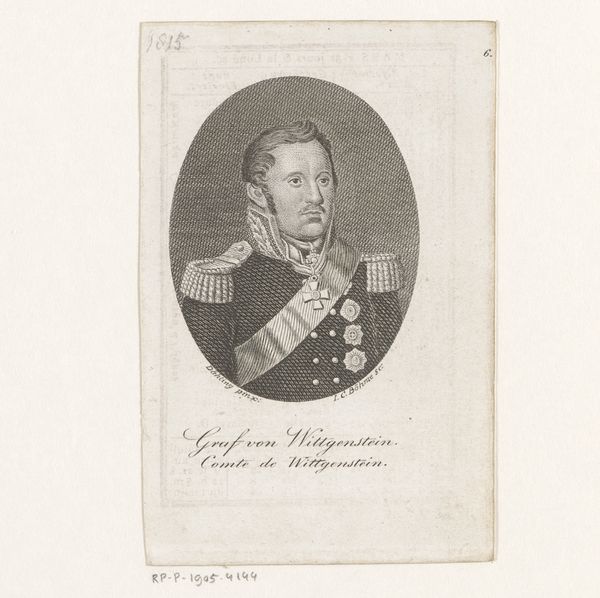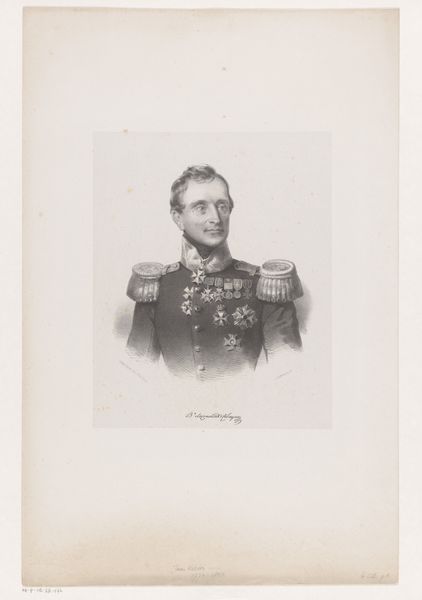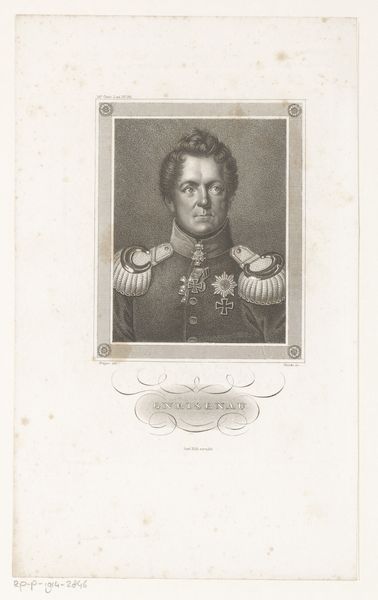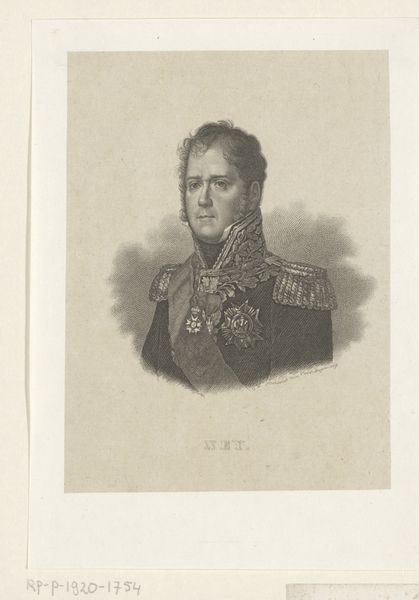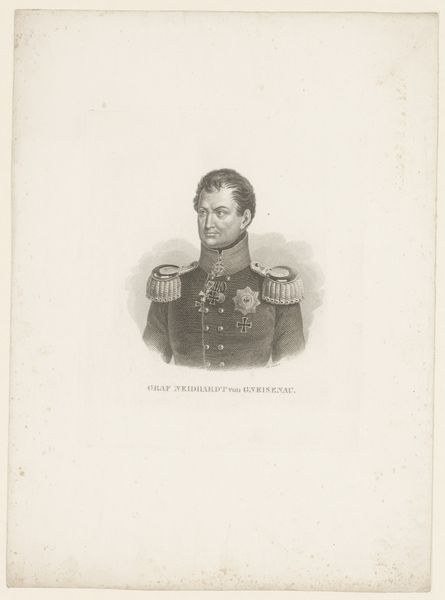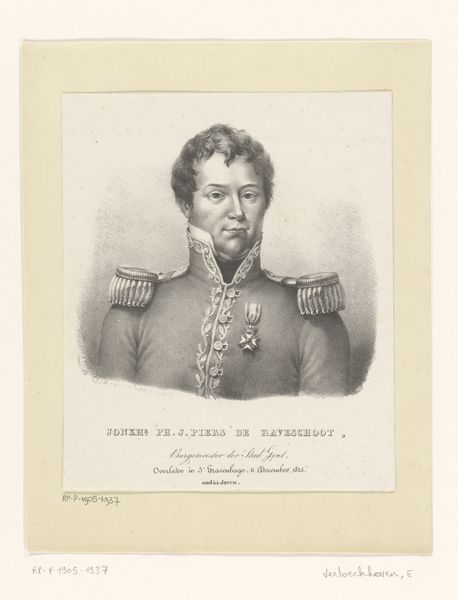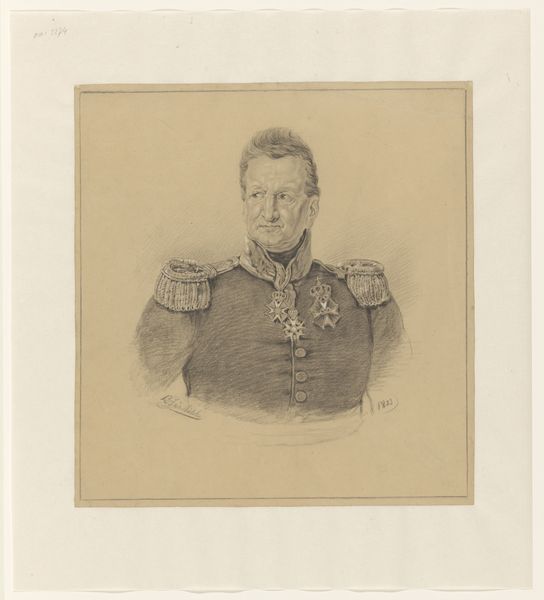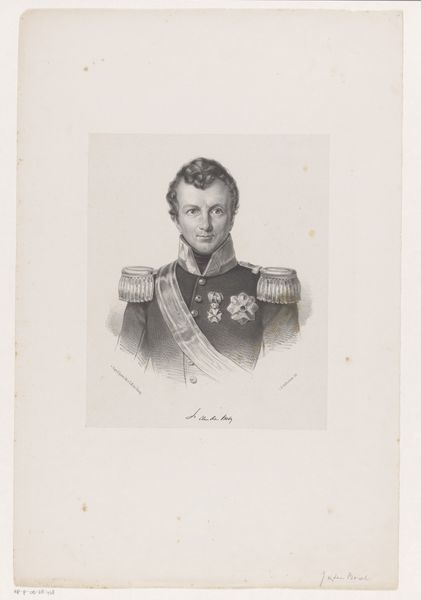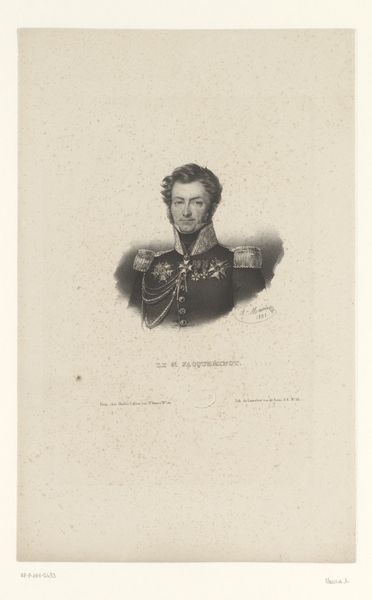
Portret van Ludwig Adolph Peter von Sayn-Wittgenstein 1813 - 1834
0:00
0:00
print, engraving
#
pencil drawn
#
neoclacissism
# print
#
pencil drawing
#
history-painting
#
engraving
Dimensions: height 347 mm, width 280 mm
Copyright: Rijks Museum: Open Domain
Curator: Here we have Johann Friedrich Bolt’s engraving, "Portret van Ludwig Adolph Peter von Sayn-Wittgenstein," created sometime between 1813 and 1834. It’s currently housed here at the Rijksmuseum. Editor: First glance? He looks…serious. Like he’s just discovered someone’s been using his good silver for, I don't know, soup kitchen duty! A soup kitchen *without* his express permission, mind you. The severe formality, that tightly buttoned uniform—it practically screams “authority.” Curator: Indeed. The portrait depicts Ludwig Adolph Peter von Sayn-Wittgenstein, a prominent figure in the Russian military during the Napoleonic Wars. Considering this, the artist deliberately employs neoclassicist visual strategies. Bolt offers a representation that both commemorates and legitimizes aristocratic power, all while the looming spectre of Napoleon marches steadily across the background of European History. Editor: It's those meticulously rendered details though! All those teensy, tiny buttons, the embroidery on the collar... and don’t forget the medals. Talk about over accessorizing! You’ve got to wonder, what's the emotional weather like behind that stony gaze? Do you think that being bedecked in all that finery somehow protected him? Did the medals insulate him? Curator: It speaks to the subject’s rank and status, certainly. These signifiers were critically important to the European political and social systems. In their absence, a portrait like this becomes a radically egalitarian endeavor, thereby failing to capture anything of its intended effect. Editor: Well, now that I really look, there's something sort of poignant about the frailty suggested by the graphite and the vulnerability of capturing it that way, knowing that his accomplishments will all eventually just fade away. Pencil drawn, like a memory of the subject. Curator: I agree that the medium’s delicacy lends it a uniquely pensive aura. In capturing this fleeting moment of glory and influence, it provides insight into broader reflections on empire, war, and the very nature of authority. Editor: Right. Like staring straight at all of our illusions! Gives you a new perspective on the portraits hanging in museums. Food for thought indeed!
Comments
No comments
Be the first to comment and join the conversation on the ultimate creative platform.
